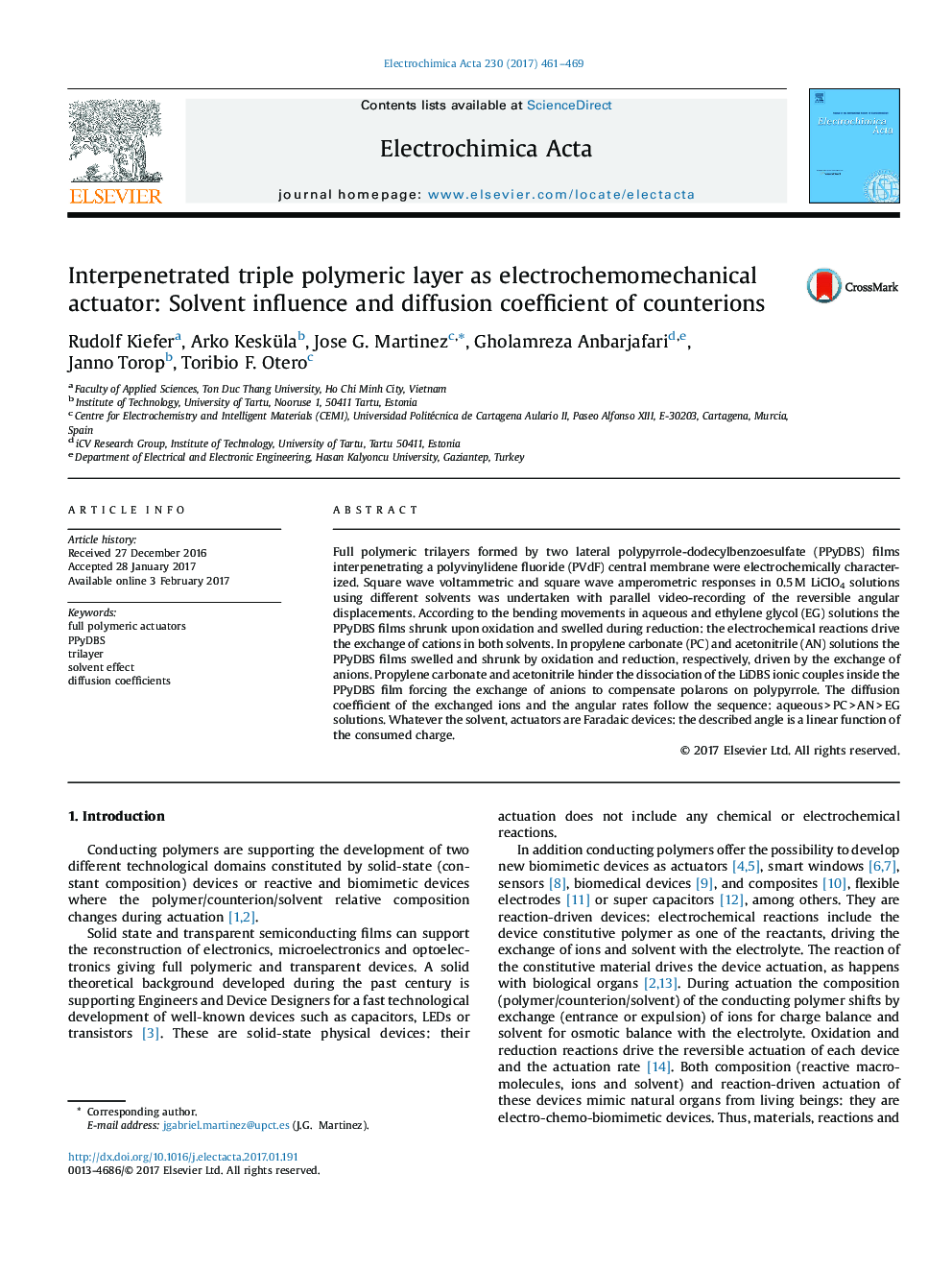| Article ID | Journal | Published Year | Pages | File Type |
|---|---|---|---|---|
| 6471472 | Electrochimica Acta | 2017 | 9 Pages |
â¢Same salt but different solvents on PPyDBS-PVdF trilayer bending actuators.â¢Solvent physical properties influenced dissociation of DBSâ-Li+ in PPyDBS films.â¢Cation-driven actuation in aq and EG solvents, anion-driven in AN and PC solvents.â¢Angular rate of the actuator have a linear relationship with diffusion coefficient
Full polymeric trilayers formed by two lateral polypyrrole-dodecylbenzoesulfate (PPyDBS) films interpenetrating a polyvinylidene fluoride (PVdF) central membrane were electrochemically characterized. Square wave voltammetric and square wave amperometric responses in 0.5 M LiClO4 solutions using different solvents was undertaken with parallel video-recording of the reversible angular displacements. According to the bending movements in aqueous and ethylene glycol (EG) solutions the PPyDBS films shrunk upon oxidation and swelled during reduction: the electrochemical reactions drive the exchange of cations in both solvents. In propylene carbonate (PC) and acetonitrile (AN) solutions the PPyDBS films swelled and shrunk by oxidation and reduction, respectively, driven by the exchange of anions. Propylene carbonate and acetonitrile hinder the dissociation of the LiDBS ionic couples inside the PPyDBS film forcing the exchange of anions to compensate polarons on polypyrrole. The diffusion coefficient of the exchanged ions and the angular rates follow the sequence: aqueous > PC > AN > EG solutions. Whatever the solvent, actuators are Faradaic devices: the described angle is a linear function of the consumed charge.
